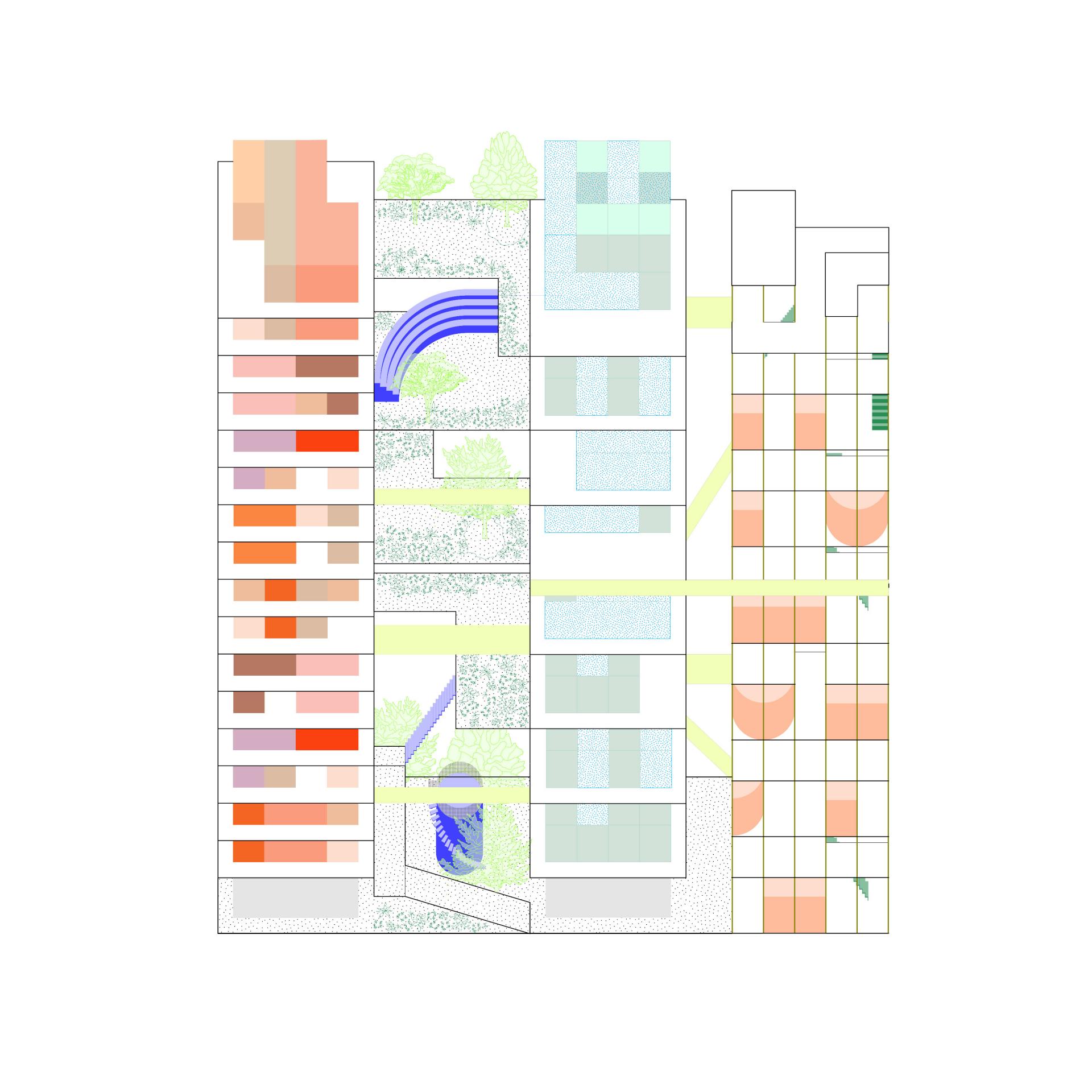Image

liz parker
Living Together:
Revisiting the SRO +
New Forms of Collectivity
Image

The current affordable housing crisis has reached a boiling point. Home prices are increasing at double the rate of wage gains, and almost half of all renters in the United States are considered cost-burdened (spending 30% or more of their income on rent). There simply isn’t enough affordable housing available to meet the growing demand and people are being priced out.
The housing market, as it stands, is in desperate need of re-examination. Options that better reflect the demographics of growing cities and promote inclusion are of vital importance for a sustainable future.
This directed research project responds to the universal need for thoughtfully designed affordable housing in current urban environments. It examines the often misunderstood SRO (single room occupancy hotel) - taking lessons in efficiency and minimal living from this model and pairing it with an understanding of the history and function of other marginal housing typologies, it synthesizes the greatest attributes and re-imagines the performance of housing in general.
By creating a new, inclusive model for collectivity and affordability that emphasizes smallness and togetherness, this typology addresses the issues that have plagued its predecessors and becomes a model for future development.
Image
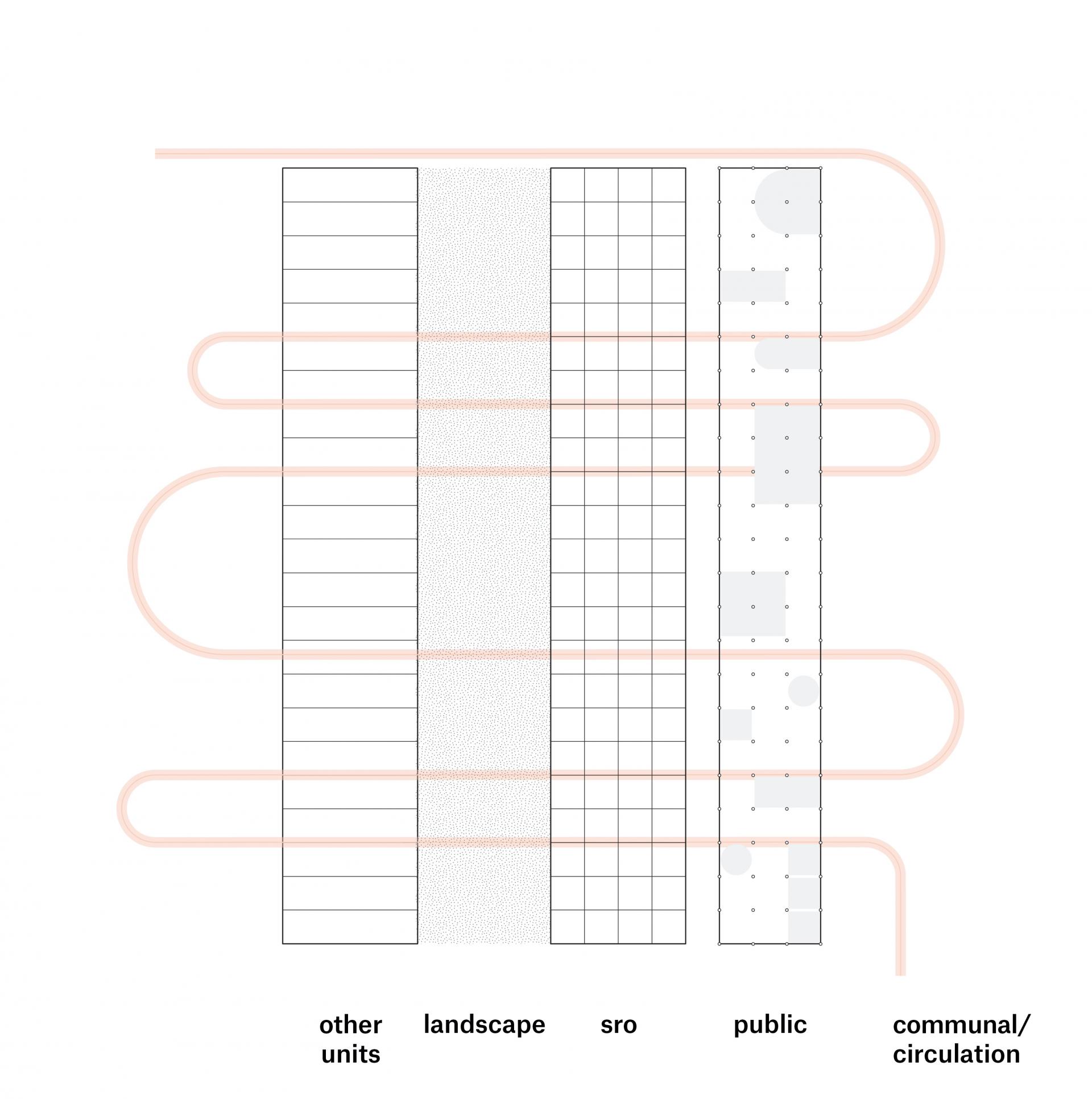
Bands | Mixing Program
I wanted this new model to be completely aggregated - a true mix of programs, uses and people. However, rather than mixing at random - I realized that each category had its own unique spatial requirements and should be able to function independently, while tying into the larger system. Divided into four bands -- two residential, and two public, the programs are woven together through the larger circulatory system and communal spaces
Image
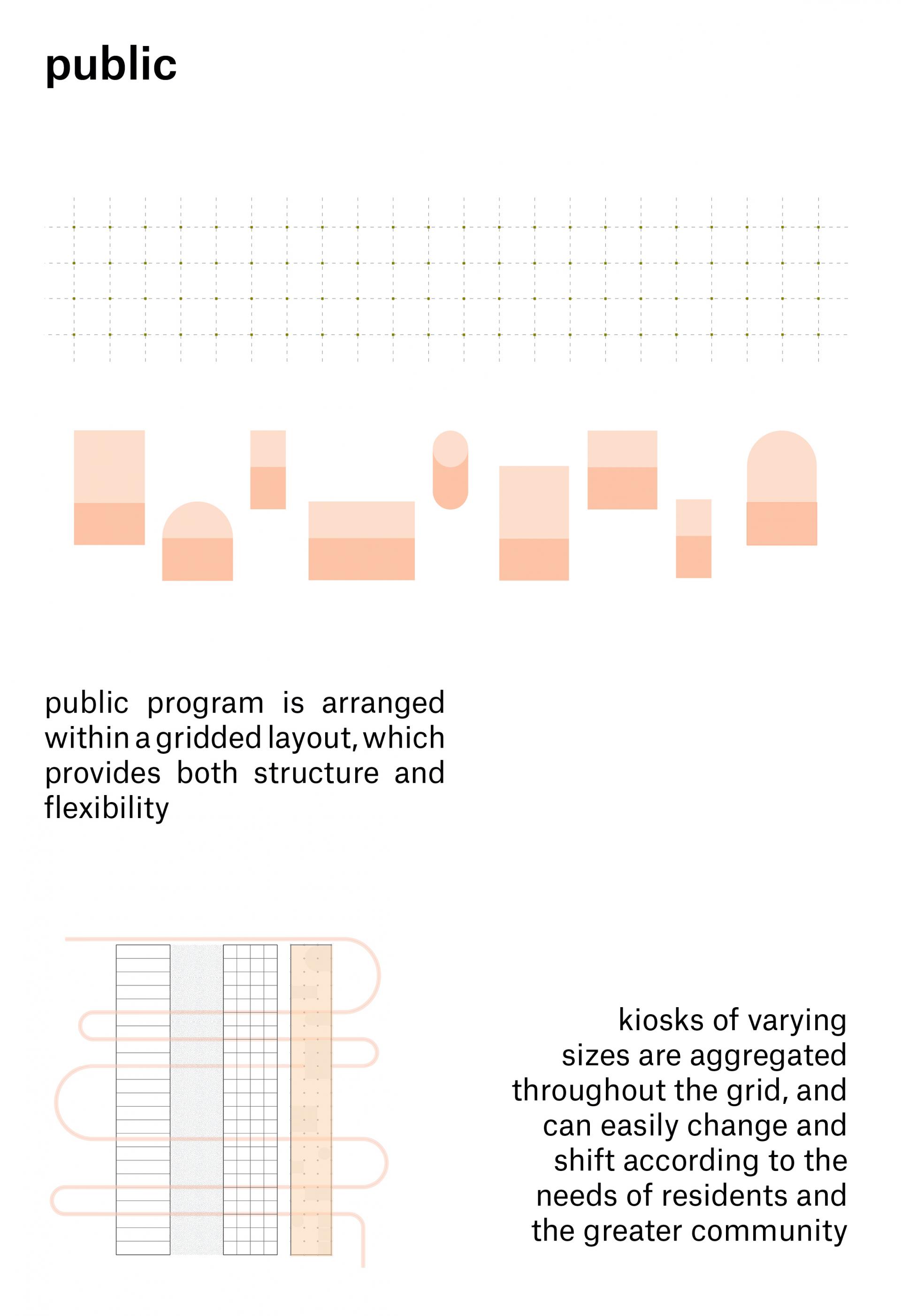
Video file
Image
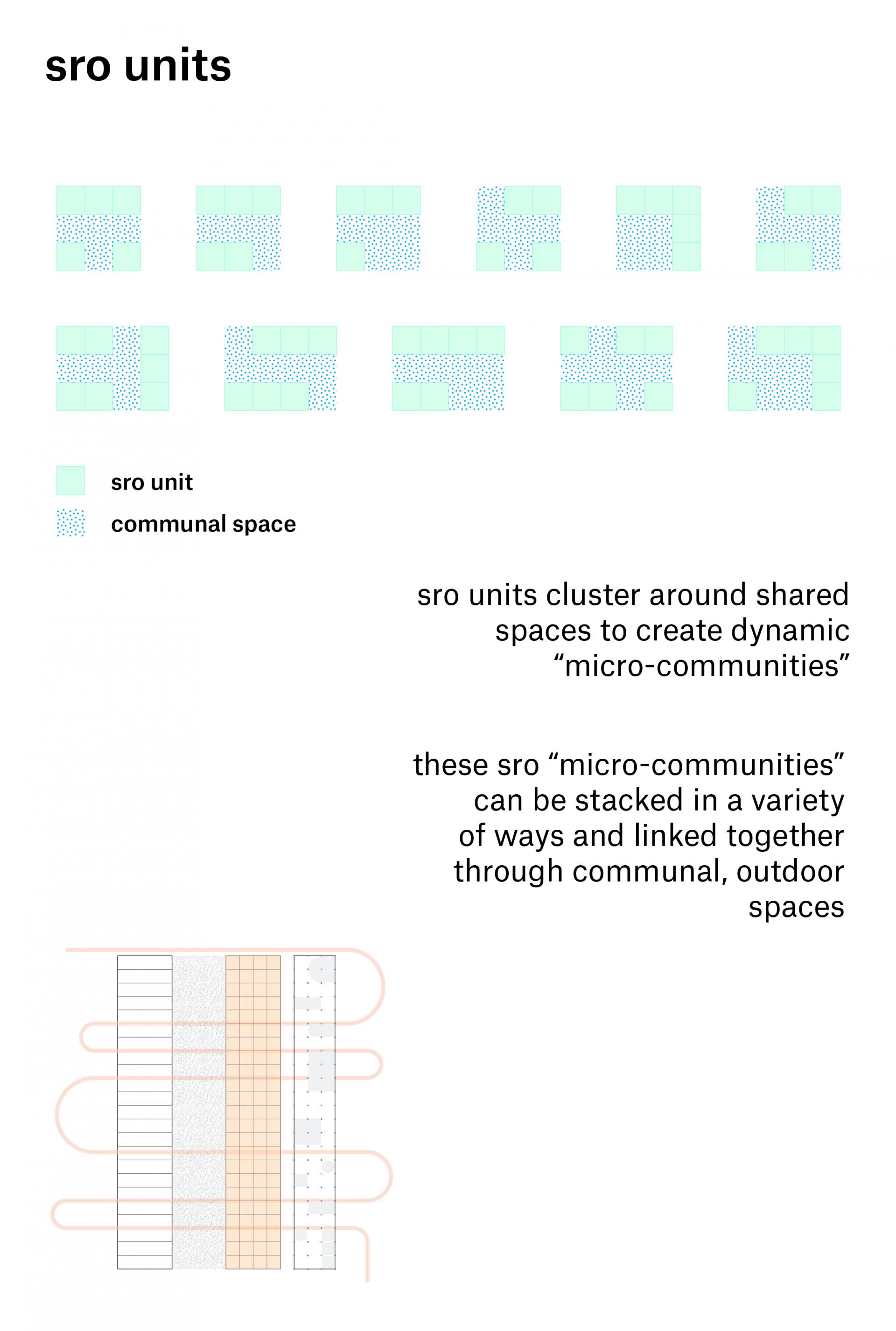
Video file
Image
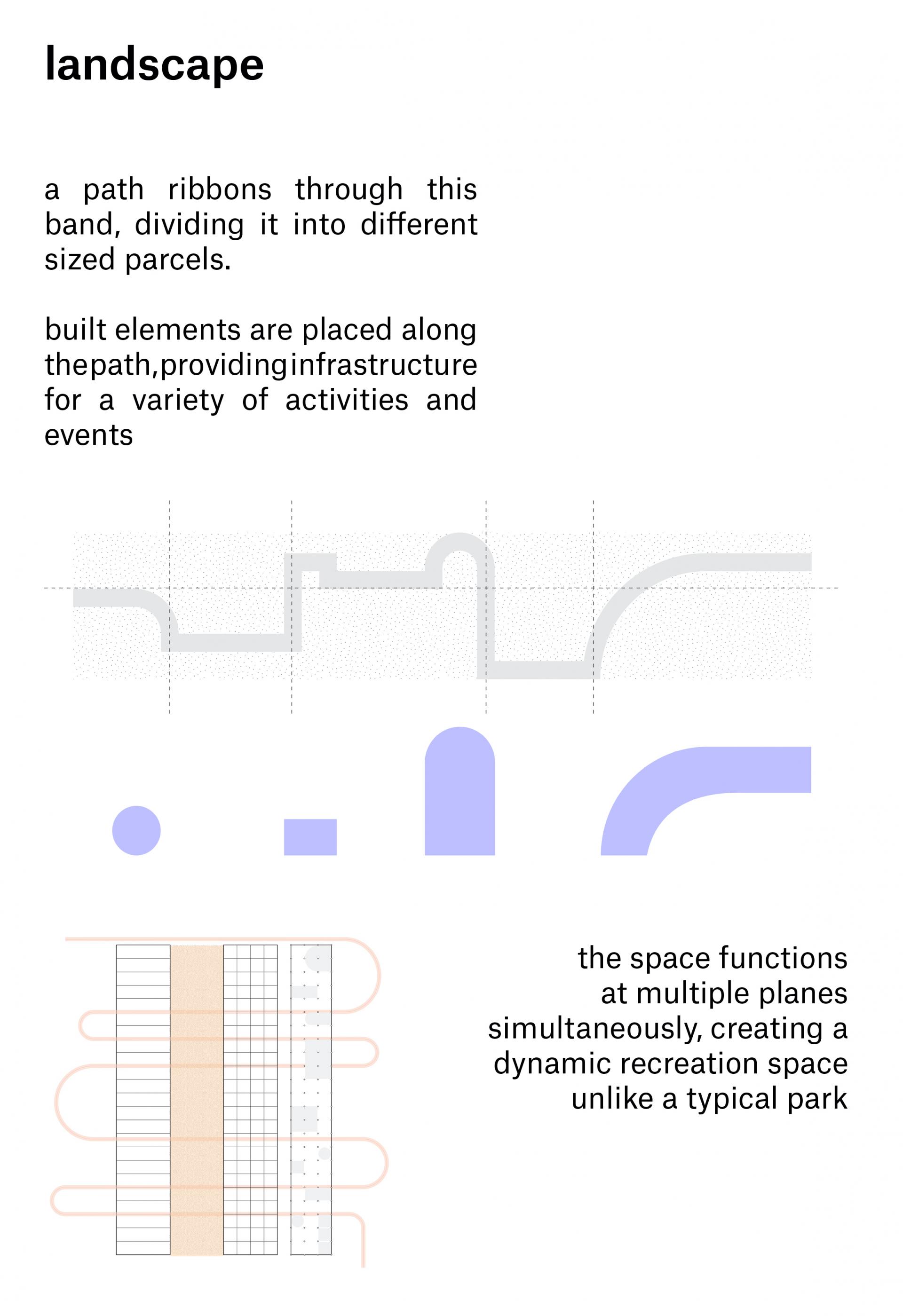
Video file
Image
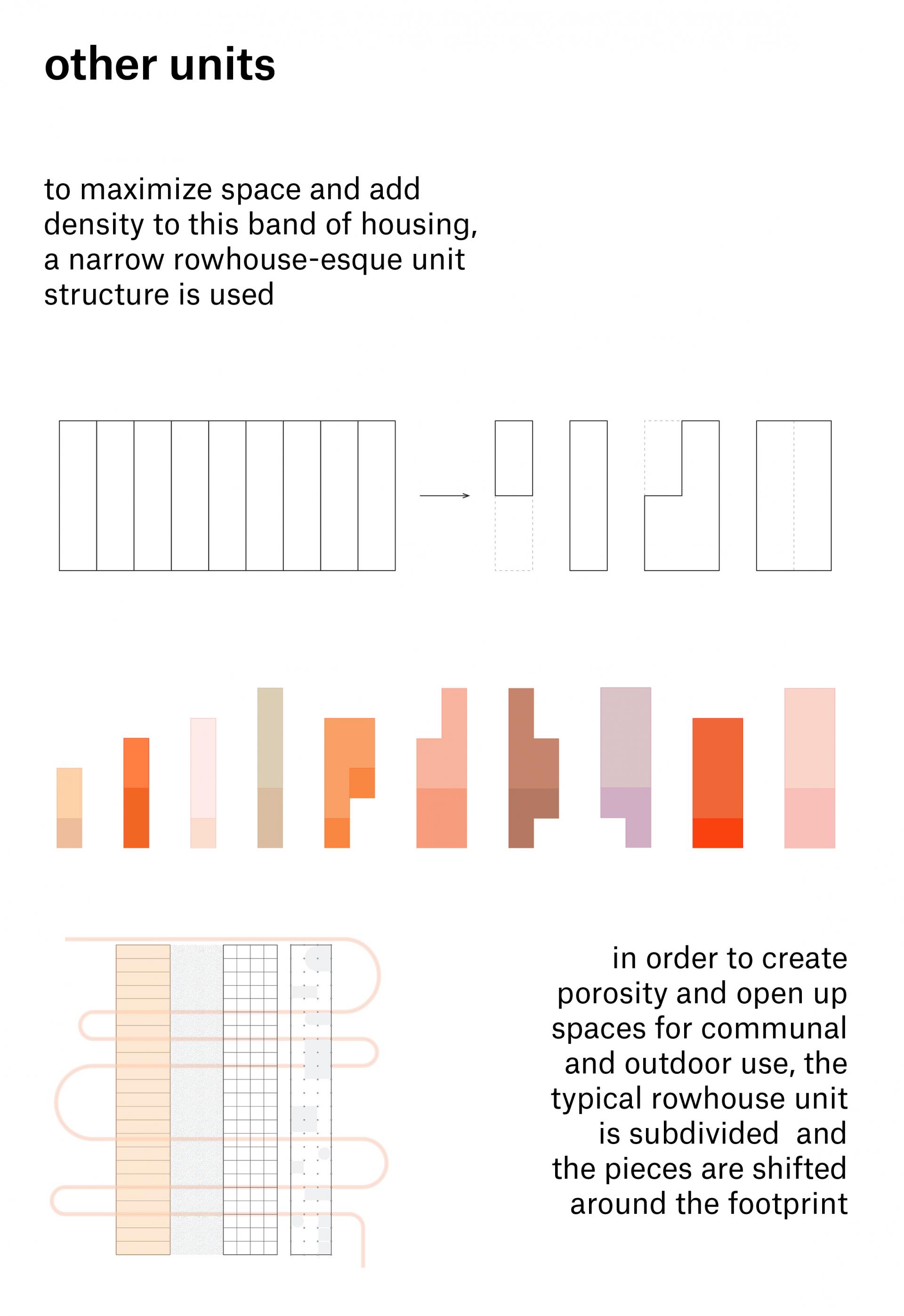
Video file
The System | Multi-Directional Reading
The bands are strategically arranged on the site to best address the needs of the residents and create a symbiotic relationship throughout. The public band faces the street for increased accessibility and foot traffic, acting as a screen for the more private spaces beyond. The SROs are placed in a more central location, increasing their accessibility to all resources, as these units are the most minimal and require more outside amenities. The landscaping serves as a buffer between the two residential bands - a generous backyard not typically found in urban housing. And finally, the larger, rowhouse units face the opposite street, a familiar and unassuming typology. The lower height of this band allows for southern light to permeate the site. A series of bridges - or elevated streets - link the bands together, enhancing the sense of community as a whole.
Video file
Community Engagement
Image
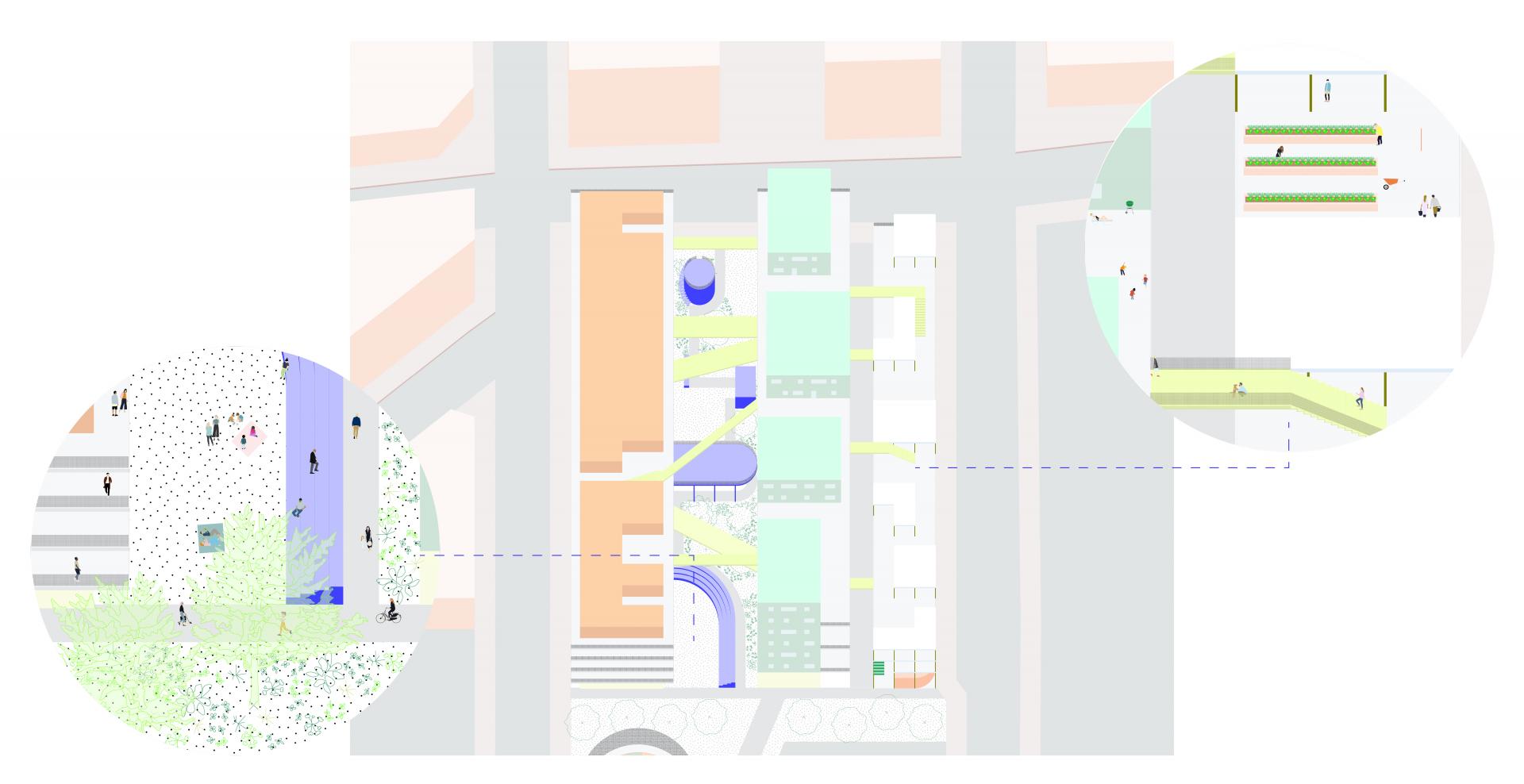
Living Together
Image
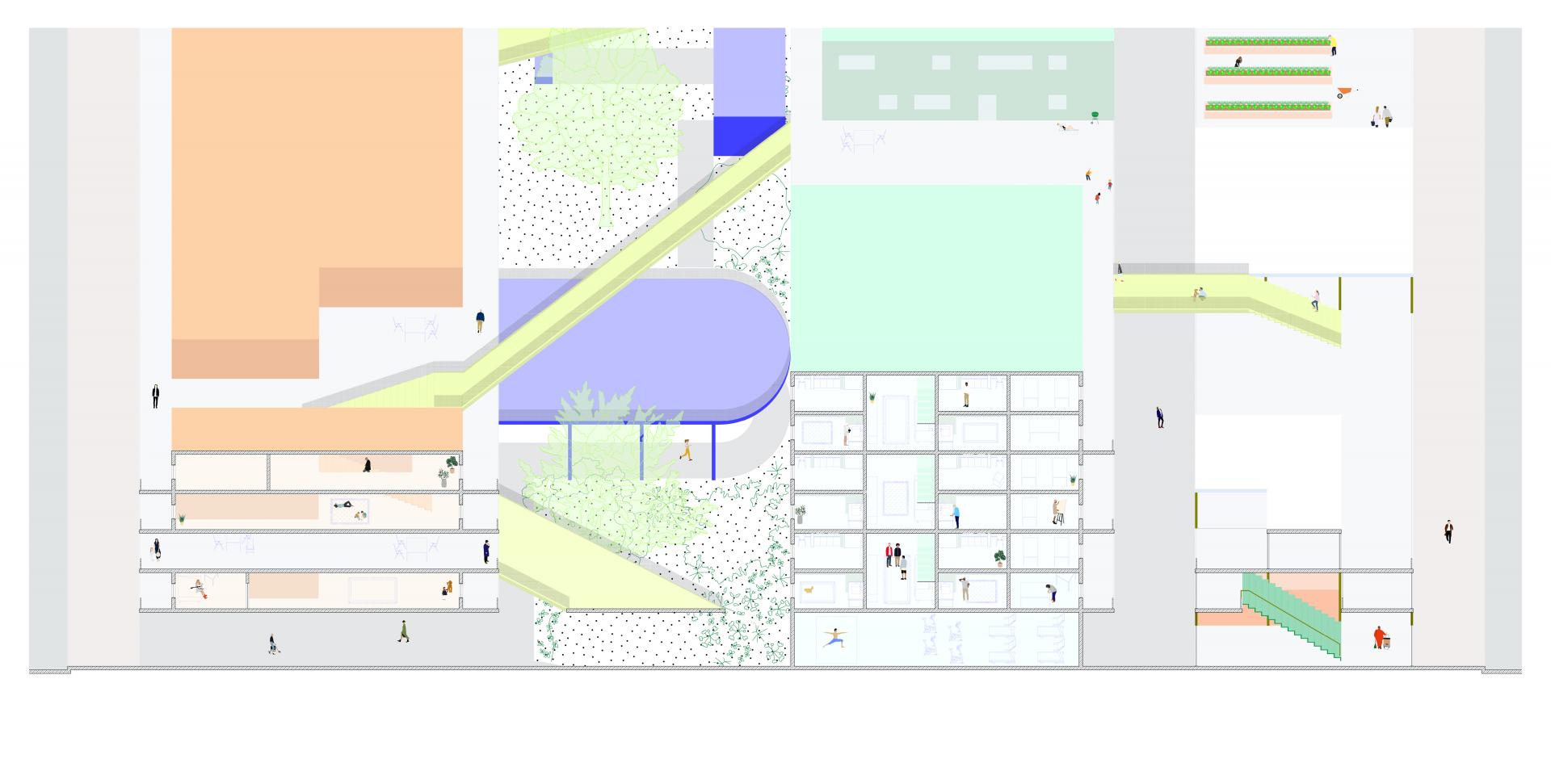
Rearranging Bands
This directed research project situates itself between spatial research and design. It develops a language and system that provides a degree of development without over-specification. While it addresses societal conditions that exist in many cities, acknowledging the importance of local social, political, and ecological factors, it emphasizes the systematic approach - the internal spatial logics of a new proto-typology.
Taking the socio- spatial principles developed in this Providence model, and applying them to different urban conditions - I have begun to look at other ways in which this proto-typology can be tested. As there are seemingly endless iterations, I look forward to developing many more models of these mixed-use, mixed-income proto-projects and re-imagining the potentials of living together.
Image
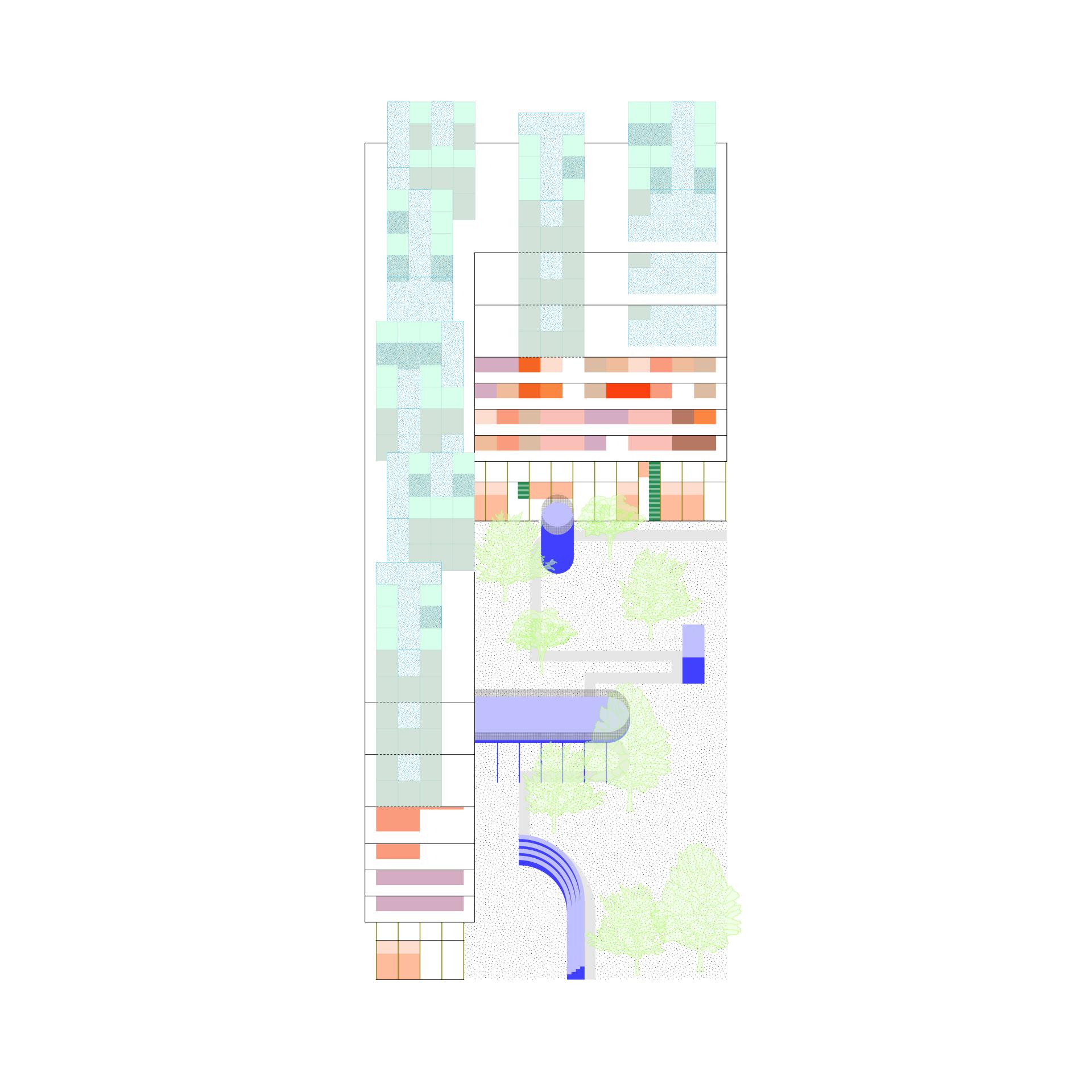
Image
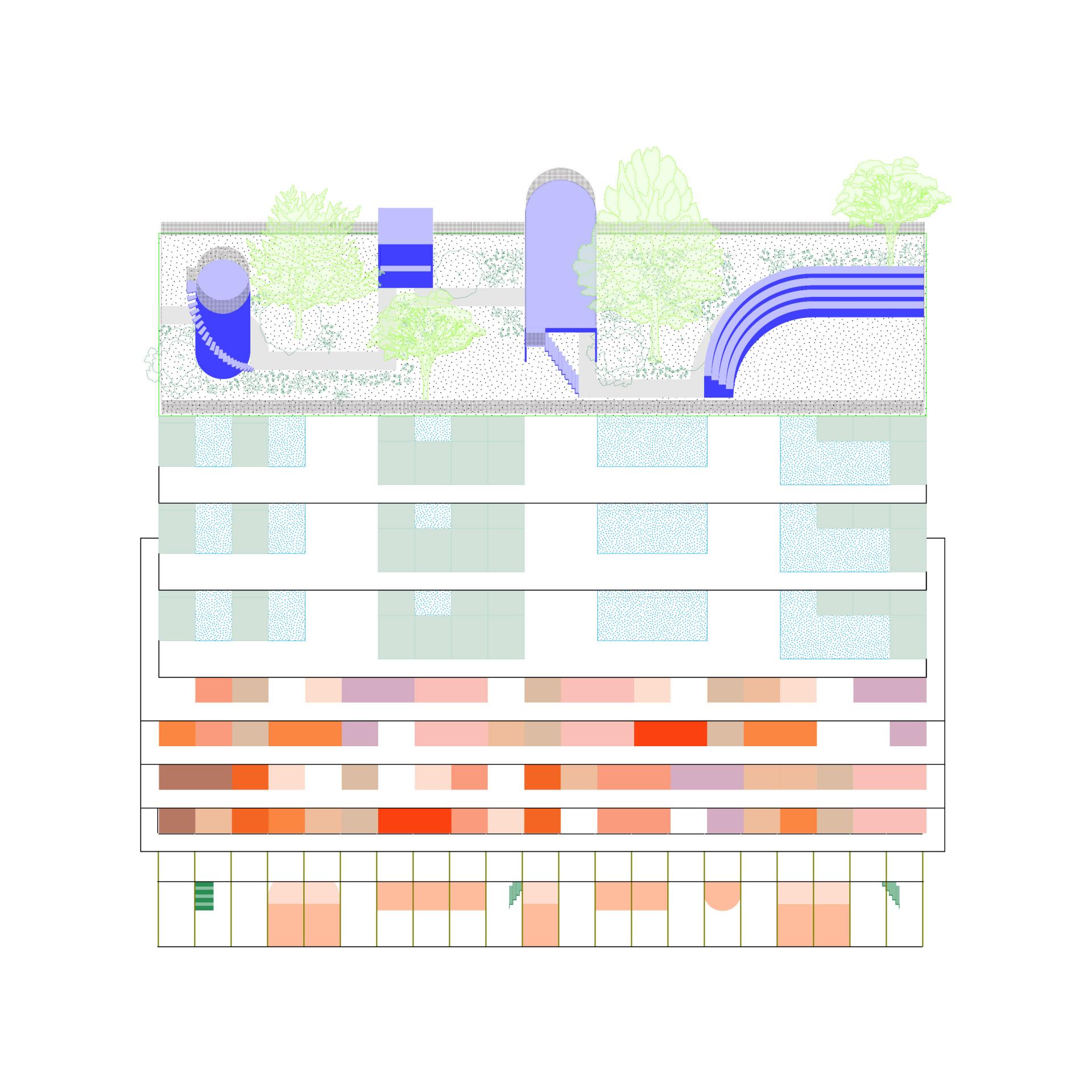
Image
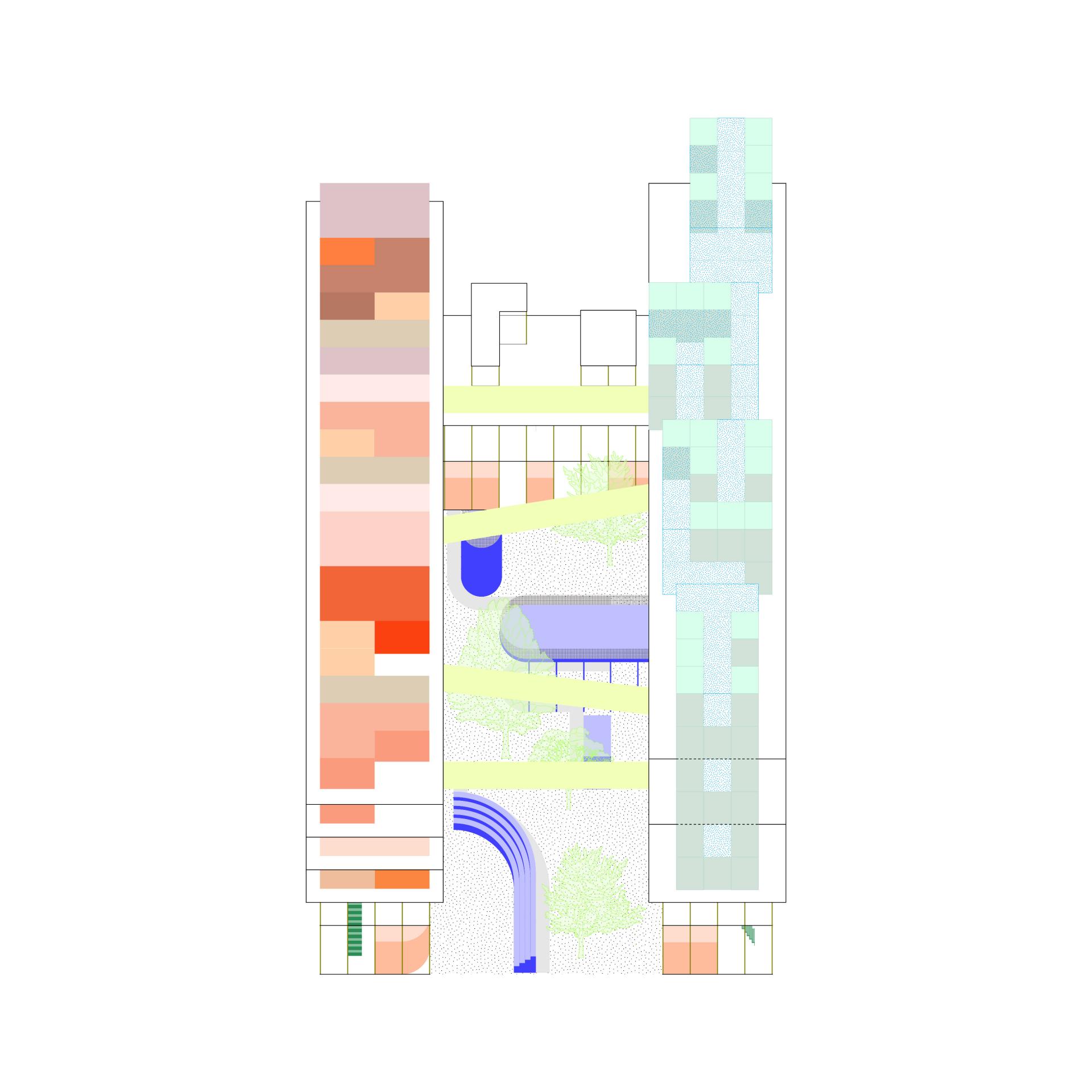
Image
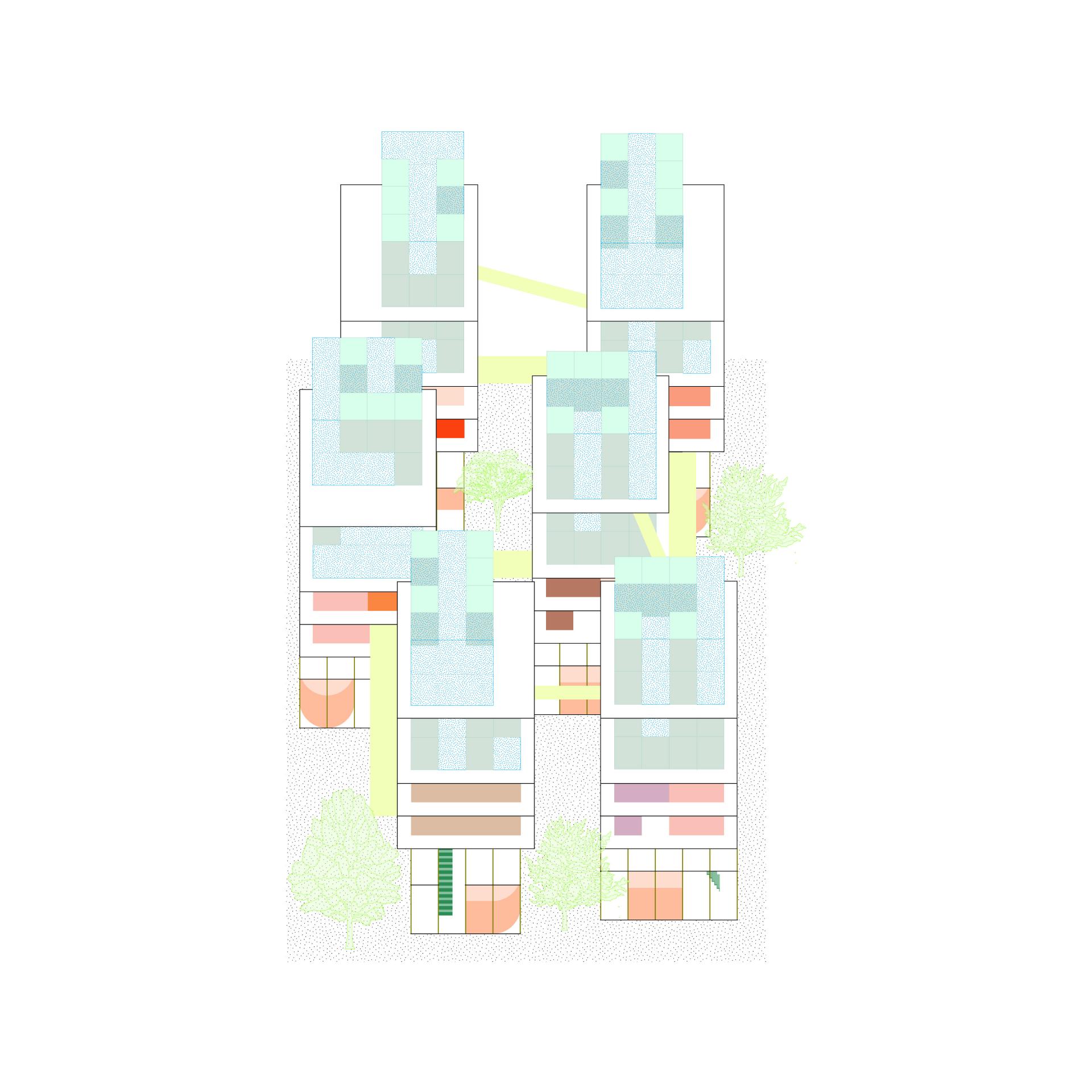
Image
